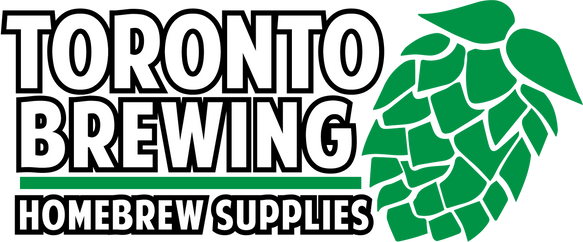If you've been enjoying various brands of hard seltzer, you might be interested in trying your hand at making your own. With hard seltzer dominating the beverage scene, we've decided to create our own version and provide you with the instructions to make it at home—saving you a significant amount of money! Whether you're an experienced homebrewer or new to the process, rest assured that making hard seltzer is surprisingly straightforward.
Need the equipment to make Hard Seltzer? Check out our 5 Gallon Starter Kit
How to Make Hard Seltzer
Indulge in a refreshing array of flavours with our kits. Choose from options like ruby grapefruit, watermelon, strawberry, lime, orange, and even coconut for a delightful twist. While these fruity spiked seltzers are perfect for summer, their enchanting effervescence makes them a treat to savour throughout the year. Best of all, they are crafted with all-natural ingredients!
Total Brew Time: 6 Weeks (4 weeks fermenting, 2 weeks bottle conditioning)
Hard Seltzer Equipment & Ingredients
- 5 Gallon Fermenter w/ drilled lid (You can use a Brewing Bucket, PET Carboy or a Glass Carboy)
- Stopper & Fermentation Airlock
- Brewing Kettle
- Hydrometer & Test Jar determine ABV
- Cleaner & Sanitizer for all brewing components
- Hard Seltzer Recipe Kit
- Approximately two cases of either 12 oz or 22 oz pry-off style beer bottles
BREW DAY
1. Heat 2.5 gallons of water.
2. While heating, add the 4.75 lbs of dextrose (corn sugar) to the kettle and stir until dissolved.
3. Bring to a boil for 10 minutes to ensure sanitary conditions. Turn heat off and add Propper Seltzer Nutrient.
4. Cool the mixture. When the 10 minute boil is finished, cool the sugar solution to approximately 70°F as rapidly as possible. Use an immersion chiller, or put the brew kettle in an ice bath in your sink.
5. Sanitize the fermenting equipment and yeast pack. While the sugar solution cools, sanitize the fermenting equipment – fermenter, lid or stopper, airlock, funnel, etc – along with the yeast pack. (Read More: How to Sanitize a Fermenter.)
6. Fill primary fermenter with 2 gallons of cold water, then pour in the cooled sugar solution.
7. Add more cold water as needed to bring the volume to 5 gallons.
8. Measure specific gravity of the wort with a hydrometer and record. (Read More: How to use a Hydrometer.)
9. Add your yeast once the temperature of the sugar solution is between 50° and 80°F. Sanitize and open the yeast pack and nutrient and carefully pour the contents into the primary fermenter. (Read More: Pitching Yeast)
10. Seal the fermenter. Add diluted Starsan to sanitized fermentation lock. Insert the airlock into rubber stopper or lid, and seal the fermenter.
1-3 DAYS AFTER BREW DAY
Active fermentation begins. Within approximately 48 hours of Brewing Day, active fermentation will begin – there will be a cap of foam on the surface of the seltzer, the specific gravity as measured with a hydrometer will drop steadily, and you may see bubbles come through the fermentation lock. The optimum fermentation temperature for this fermentation is 60°- 80° F. Move the fermenter to a warmer or cooler spot as needed.
1-4 WEEKS AFTER BREW DAY
Approximately one to two weeks after brewing day, active fermentation will end. When the foam subsides and no CO2 bubbles are evident, bubbling in the air lock slows down or stops, and the specific gravity as measured with a hydrometer is stable, allow to rest for an additional 2 weeks to clear and then proceed to bottling.
HOW TO BOTTLE YOUR HARD SELTZER (4 WEEKS AFTER BREW DAY)
1. Sanitize siphoning and bottling equipment.
2. Mix a priming solution (a measured amount of sugar dissolved in water to carbonate the bottled beer). Use the following amounts, depending on which type of sugar you will use: Corn sugar (dextrose) 2/3 cup in 16 oz water OR Table sugar (sucrose) 5/8 cup in 16 oz water. Bring the solution to a boil and pour into the bottling bucket.
3. Siphon into bottling bucket and mix with priming solution. Stir gently to mix—don’t splash.
4. Add natural flavouring to 1 cup of water until dissolved. Heat until hot to touch and hold. Gently stir into the primed seltzer.
5. Fill and cap bottles. Click here to read the full guide on how to bottle beer.
6. Condition bottles at room temperature for 1–2 weeks. After this point, the bottles can be stored cool or cold.
ENJOY! Pour into a clean glass, being careful to leave the layer of sediment at the bottom of the bottle.
Ready to Try it Yourself?
